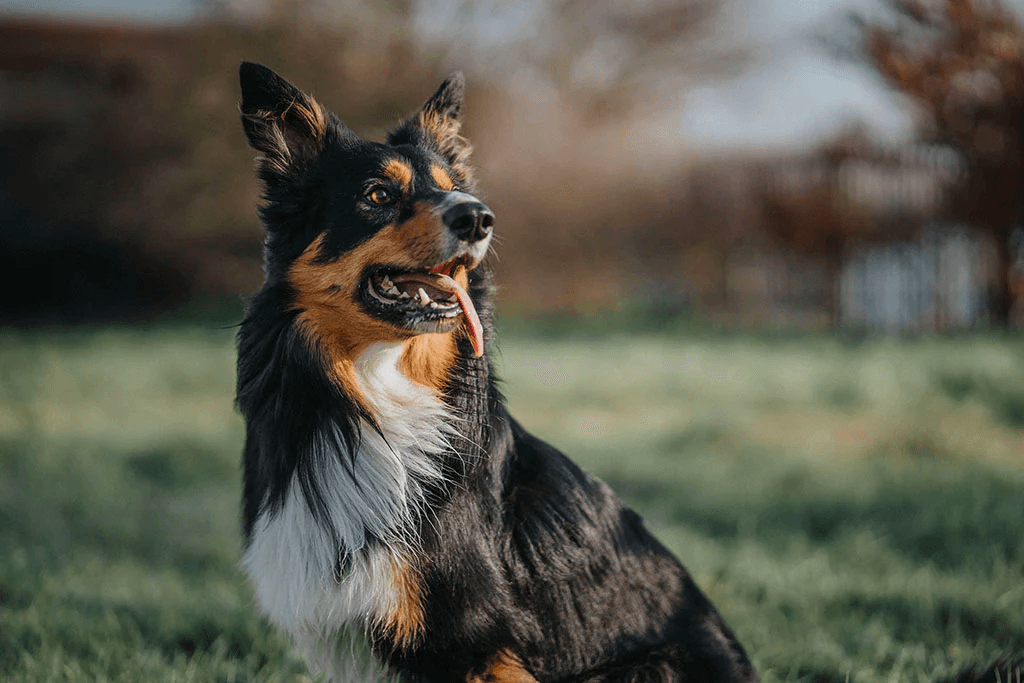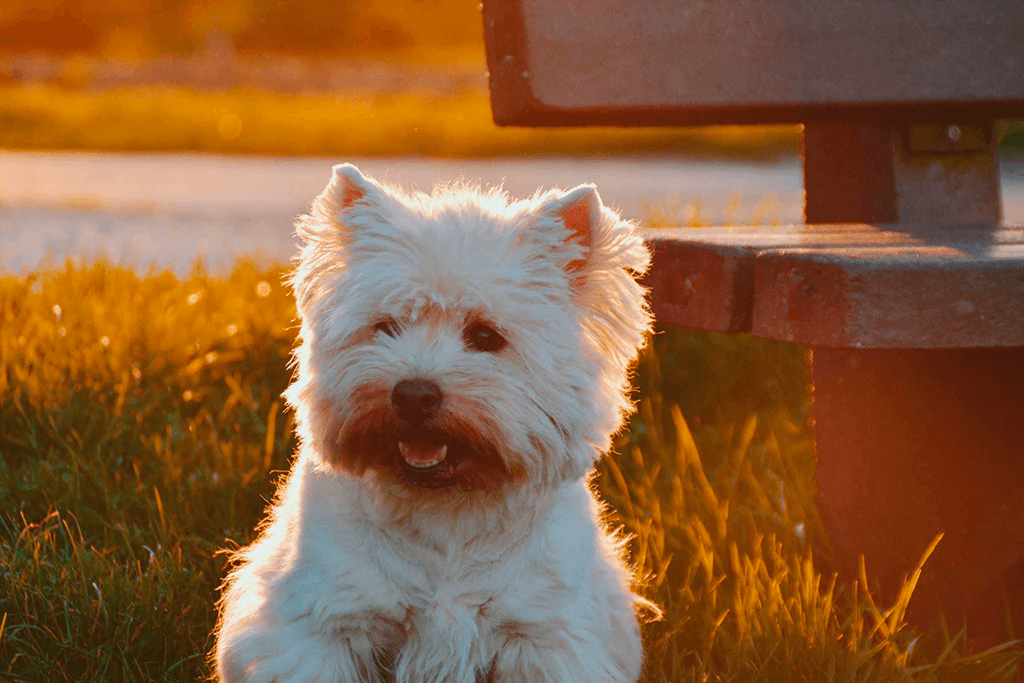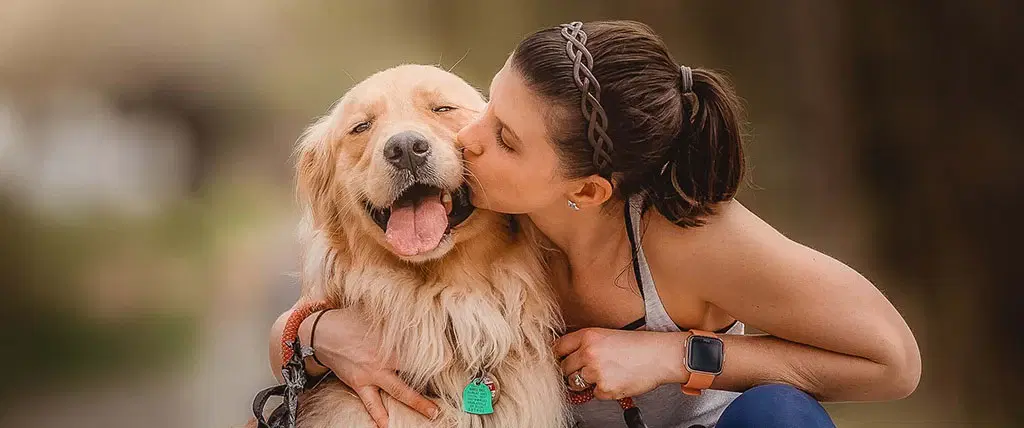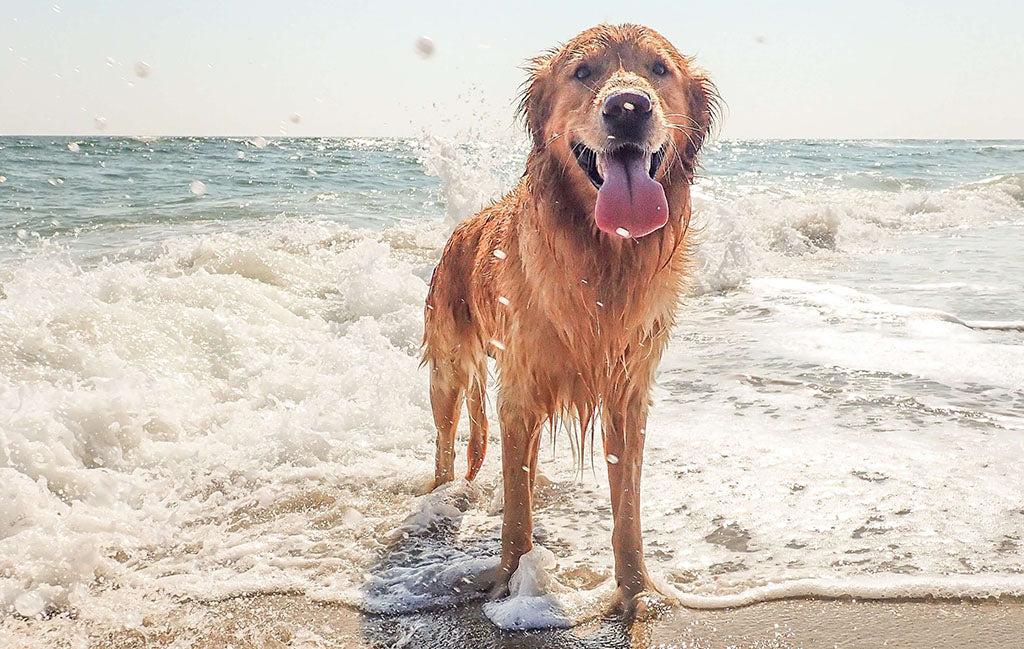When choosing a dog toothbrush, opt for one made specially for dogs. Choose a finger brush for smaller dogs or puppies, an angled-handle dog toothbrush to reach back teeth for medium-large dogs, or a dual-headed brush if you have multiple dogs of different sizes.
- Home/
- Dog/
- Health & Wellness/
- How to Choose a Dog Toothbrush: Types & What to Look For
How to Choose a Dog Toothbrush: Types & What to Look For

Quick takeaway: When choosing a dog toothbrush, opt for one made specially for dogs. Choose a finger brush for smaller dogs or puppies, an angled-handle dog toothbrush to reach back teeth for medium-large dogs, or a dual-headed brush if you have multiple dogs of different sizes. Lean more about dog toothbrushes and toothbrush toys in this helpful guide from dog dental expert Emily Johnson.
Why Is Choosing The Right Dog Toothbrush So Important?
Responsible pet owners use a dog toothbrush and toothpaste to help maintain their pup’s teeth, brushing regularly to help cut down tartar and keep breath fresh. Brushing your dog’s teeth isn’t the most exciting part of pet parenting, but it’s one of the most important. And the right toothbrush can make the whole process easier for both of you. In this guide, we explore the best dog toothbrush options for nervous pups, excitable dogs and dogs with stinky breath.
Dog Toothbrush Types: What Are Your Options?
There are quite a few different types of dog toothbrushes out there. Choosing the right one often comes down to your dog’s size, personality, and how comfortable they are with having their mouth handled.
- Finger brushes are small, rubbery sleeves that fit over your finger and have soft bristles or nubs. They’re perfect for smaller dogs or pups just getting used to brushing. “Finger brushes are good for puppies or dogs new to brushing, but there’s always a small risk of getting nipped if your dog suddenly jerks,” says veterinarian Dr. Sabrina Kong, DVM.
- Angled-handle toothbrushes look a bit like human toothbrushes, but the angled head makes it easier to reach those tricky back teeth. They tend to work best for medium to large dogs.
- Dual-headed brushes have two brush sizes, one large, one small, on either end. They’re handy if you have multiple dogs or want one tool to clean every corner of your pup’s mouth.
- Electric toothbrushes for dogs use gentle vibrations to help break down plaque. They’re super effective, but not every dog is cool with the buzzing. “Electric brushes are great for stubborn tartar, but some dogs are intimidated by the noise or sensation,” Dr. Kong explains.
- Toothbrush toys aren’t true toothbrushes, but they do have textured surfaces your dog can chew on to help keep their teeth cleaner between brushings. Think of them as a helpful add-on, not a full replacement.
How To Choose the Best Dog Toothbrush for Your Pup

Picking the right toothbrush isn’t just about size; it’s also about safety and comfort. You want something that gets the job done without irritating your dog’s gums or turning every brushing into a battle.
Soft bristles are key. “Hard bristles can damage gum tissue,” says Dr. Kong. “Always opt for soft bristles that are gentle but effective.” You’ll also want to make sure the brush head isn’t too big for your dog’s mouth. Smaller breeds usually need a brush that’s about the size of your pinky.
A non-slip handle is another plus. If your dog tends to squirm, you’ll want a brush that’s easy to hold on to. And if your pup is a little nervous or just starting out, finger brushes can be a great way to ease them in. “Finger brushes help build trust since they feel less invasive,” Dr. Kong notes.
One more tip: Look for a toothbrush with a VOHC (Veterinary Oral Health Council) seal. That means it’s been tested and shown to actually work.
Dr. Kong also recommends skipping toothbrushes with bulky, replaceable heads. “They’re often too big for small dogs and not eco-friendly in the long run,” she says.
Tips for Brushing Your Dog’s Teeth
If your dog’s not used to toothbrushing, it’s normal for them to be unsure at first. Take it slow and keep things relaxed. Let them sniff the brush and lick the toothpaste off before you even try brushing. “Start by applying a dab of poultry-flavored toothpaste to the brush and letting them lick it off,” says Dr. Kong. “This helps create a positive association.”
When you’re ready to brush, gently lift your dog’s lips and use small, circular motions along the outer gum line. “You don’t need to brush the inside of the teeth; plaque mainly accumulates on the outer surfaces,” Dr. Kong adds.
And don’t worry about being perfect. If you only get a few teeth brushed, that’s still a win. Dr. Kong’s dog, Maple, gets a lick of peanut butter after every brushing session as a reward.

Can You Use a Human Toothbrush on a Dog?
You can in a pinch, but it’s not ideal. Human toothbrushes just aren’t made for a dog’s mouth. “They have longer bristles that don’t reach the back molars effectively and can irritate the gums,” explains Dr. Kong.
If you do have to use one temporarily, choose an extra-soft brush and never use human toothpaste. Many human toothpastes contain xylitol, mint, or other ingredients that can make your dog sick.
How Often Should You Brush Your Dog’s Teeth?
Daily brushing is ideal, but even doing it a few times a week makes a big difference. “Even brushing every other week can reduce plaque by up to 60%,” says Dr. Kong.
Your vet might also recommend a professional cleaning every year or two, especially if your dog is small, since smaller breeds tend to have more dental issues. “Small dogs like Yorkies and Pomeranians often need yearly cleanings because their teeth are so crowded,” Dr. Kong explains.
Extra Dental Care Tips for Dog Owners
Brushing is the gold standard, but there are other ways to support your dog’s dental health, too. Adding a dental powder, like PetLab Co.’s ProBright Advanced Dental Powder, can help freshen breath and keep teeth cleaner between brushings.
Chewing also helps. “Choose dental chews and skip rawhide, it splinters easily,” says Dr. Kong. Crunchy veggies, such as frozen green beans or raw carrots, can also serve as tasty, low-calorie chew treats.
And don’t skip the vet checkups. “Annual exams help catch early dental issues and let your vet recommend a care plan that’s right for your dog,” says Dr. Kong.
The Bottom Line: Choosing a Dog Toothbrush for Your Pup
Brushing your pup’s teeth doesn’t have to be a struggle. With the right dog toothbrush and a little patience, you can help keep their mouth clean and their breath bearable. Even if you only manage a few brushings a week, it’s better than none, and your dog’s teeth (and your nose) will thank you for it.
 E
E



